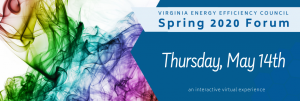 Social distancing did not stop Virginia’s energy efficiency industry from coming together to learn and connect at our first-ever virtual Spring Forum. Over 100 energy efficiency professionals participated in the event, which included three educational sessions, our annual member meeting with Board elections, the fifth annual Virginia Energy Efficiency Leadership Awards, and a virtual networking break. Attendees were treated to topics such as the 2020 legislation, energy data, high-performance buildings, technology, and more. We want to extend a huge thank you to our sponsors for their support and to everyone who attended.
Social distancing did not stop Virginia’s energy efficiency industry from coming together to learn and connect at our first-ever virtual Spring Forum. Over 100 energy efficiency professionals participated in the event, which included three educational sessions, our annual member meeting with Board elections, the fifth annual Virginia Energy Efficiency Leadership Awards, and a virtual networking break. Attendees were treated to topics such as the 2020 legislation, energy data, high-performance buildings, technology, and more. We want to extend a huge thank you to our sponsors for their support and to everyone who attended.
The event started off with the “2020 Legislation” session. Led by VAEEC’s Chelsea Harnish, Sen. Jennifer McClellan, and Del. Rip Sullivan discussed the monumental energy efficiency laws that passed the General Assembly earlier this year, including the Virginia Clean Economy Act (VCEA). The VCEA mandates 5% energy savings from the investor-owned utilities by 2025, marking Virginia as just the second state in the Southeast to establish a mandatory stand-alone Energy Efficiency Resource Standard (EERS). Additional items discussed included the On-Bill Tariff and the Solar Freedom bills, as well as the election of a new State Corporation Commissioner.
Next, “Virginia’s Energy Efficiency Potential” provided organizational updates and accomplishments, along with the incredible momentum VAEEC and the industry as a whole is gaining. Many of the organizational highlights can be found in our 2019 annual report. Also during this session, Board Vice Chair John Morrill (Arlington County Government) led our 2020 Board of Directors election. VAEEC members re-elected Goerge Barnes (Trane)and elected two new Board members: Maggie Kelley (Southeast Energy Efficiency Alliance) and Leigh Anne Ratliff (CPower Energy Management). We are excited to add these new voices to our leadership.
Board Chair David Koogler (Rappahannock Electric Cooperative) recognized winners of the fifth annual Virginia Energy Efficiency Leadership Awards. Henrico County was recognized for its LEED Certified buildings, and the University of Virginia (UVA) was recognized for its Delta Force Program. Since 2011, Henrico County has built or renovated 16 government buildings and schools to LEED certification standards. The County is currently pursuing certification of LEED Silver or higher on six current projects. These efforts have reduced energy use by approximately 30 percent and are overseen by Carrie Webster, Energy Manager with Henrico County.
UVA’s Delta Force Program achieves energy efficiency and savings across the university’s nearly 18 million square feet of building space. Since 2009, UVA has invested $17.4 million in energy projects, for a savings of $28.7 million in avoided energy costs and 180,000 metric tons of CO2 emissions. The program is overseen by Jesse Warren, sustainability program manager for buildings and operations in the Division of Facilities Management. Congratulations, Henrico County and UVA’s Delta Force Program! Keep up the inspirational work.
During this portion of the event, David Steiner (D+R International) was also recognized for his service to the VAEEC. David joined the VAEEC Board of Directors as a founding member in 2012 and has now stepped into a new role as Director Emeritus. Thank you, David, for your tireless support of the organization.
VAEEC’s annual forums are known for their ability to bring together Virginia’s energy efficiency leaders to make valuable connections. Even though this year’s event occurred virtually, VAEEC wanted to make sure this opportunity was still available. The next session, “Virtual Networking”, went off without a hitch. Participants joined breakout rooms based on different topics: 2020 Legislation, Weatherization Programs, COVID-19 Predictions & Responses, and Innovation & Technology. Lively conversations ensued, and beneficial connections were made. Thank you Community Housing Partners for sponsoring this session.
“Leveraging Energy Data from Start to Finish”, moderated by John Morrill (Arlington County Government), followed. Brandi Frazier Bestpitch introduced the Virginia Dept. of Mines, Minerals and Energy’s new Energy Data Warehouse. Tim Bernadowski Siemens Industry) covered building automation, including the types of data you can collect and how to utilize those data to meet your needs. Scott Dicke (Sustainable Real Estate Solutions (SRS)) discussed how data collection can lead to project origination while rolling out SRS’s new EPIC tool. The group also discussed project opportunities during a global pandemic.
The last session of the day, “Achieving High-Performance Buildings”, focused on EarthCraft and LEED certifications for commercial buildings. Liz Beardsley (US Green Building Council, VAEEC Board) moderated the session and provided an overview of what defines a high-performance building. Matt Waring (Viridiant) and Bryna Dunn (Moseley Architects) covered the differences between EarthCraft and LEED and the best practices for achieving these above-code credentials.
As with all of our work, the VAEEC Spring Forum would not be possible without the continuing support of our remarkable members and sponsors. To everyone who participated in this year’s Spring Forum, thank you for helping us push energy efficiency in Virginia toward an even brighter future.
Presentations can be viewed here:
2020 Legislation
Virginia’s Energy Efficiency Potential
Leveraging Energy Data Tracking from Start to Finish
Achieving High-Performance Buildings
An audio recording of each presentation has been provided to all participants.
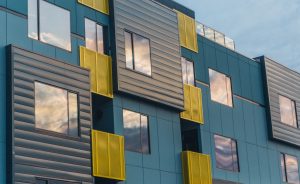
C-PACE finances EE improves for commercial and multifamily buildings
By now, many people in this industry have at least heard of Commercial Property Assessed Clean Energy, or C-PACE. Across the Mid-Atlantic region, VAEEC and other stakeholders, including the Mid-Atlantic PACE Alliance, or MAPA, have been working diligently to accelerate the implementation of C-PACE programs and projects. Through this work, over $50 million of C-PACE projects have been financed across the region since January 2017.
C-PACE is a voluntary special assessment that is added to a property’s real estate tax bill. It provides building owners with a means to finance energy efficiency, water conservation, renewable energy, stormwater management, and resiliency projects for new and existing commercial, industrial, multifamily (with five+ dwellings), and nonprofit properties.
C-PACE is more advantageous than traditional financing by providing 100% financing, no upfront cash investment, and immediate savings. In fact, many projects are cash-flow positive from day one.
Benefits of C-PACE
- Increased building value
- Reduced utility bills
- More comfortable space with improved air quality
- 100% financing: no upfront cash investment required
- Long-term loans up to 25+ years: lower annual payments, positive cash flow
- Repaid as a Special Assessment on the Real Estate Tax Bill
- Transferable: the loan stays with the property upon sale
- Non-accelerating
- Can fill a gap in the capital stack
- Contributes to economic development, local job creations, and improved public health
How C-PACE differs from traditional financing options
| Traditional Construction Loan | C-PACE Assessment |
| Purpose | HVAC and Lighting | HVAC and Lighting |
| Project Cost | $100,000 | $100,000 |
| Loan | $75,000
25% upfront cash investment required | $100,000
0% upfront investment required |
| Interest Rate | 5% | 6.25% |
| Term | 5 years, fully amortizing | 15 years, fully amortizing |
| Monthly Payment | $1,415 | $857 |
| Annual Payment | $16,984 | $10,290 |
What role does the lending community play?
Funding for C-PACE projects comes from private capital providers, including local, regional, and national banks and investors. Capital providers or lenders approve the financing eligibility and underwriting for the project. They even have the ability to act as the project originator and can assist the owner with obtaining mortgage holder consent.
How does C-PACE benefit the lending community?
- This fairly new financing mechanism provides lenders and capital providers with new funding opportunities.
- C-PACE provides a good fixed rate of return without the property owner needing to refinance or incur additional transaction costs.
- The ability to transfer the C-PACE assessment to a new owner upon sale provides the current owner with an incentive to make building improvements now.
How are mortgage lenders involved?
Since C-PACE is secured by a special assessment, a corresponding lien is placed on the property. This is similar to how localities fund public infrastructure projects, such as sewers. The assessment is senior to all commercial liens, including mortgages. Therefore, property owners must obtain consent from their mortgage lender before the project can be approved.
To date, over 200 mortgage lenders across the nation have consented to C-PACE assessments for a variety of reasons. In partnership with MAPA, VAEEC has put together a directory of mortgage lenders who have consented to C-PACE in the Mid-Atlantic region. If you are looking to utilize C-PACE financing, you can check this directory to see if your mortgage lender is on the list.
Don’t see your mortgage lender listed? MAPA has put together a guide highlighting the top six reasons a mortgage lender would consent to a C-PACE assessment. The Case for Lender Consent: A C-PACE guide for mortgage lenders & property owners is an excellent way to engage your property’s senior lender(s) to assess their receptiveness to C-PACE early on in the project.
Stay tuned to learn more! MAPA will be holding a webinar, Financing C-PACE with Regional and Local Lending Partners, in the near future.
The 2020 General Assembly session marked a monumental shift in energy policy in the state, with multiple bills successfully pushing towards a cleaner, carbon free Virginia. Below, we highlight five bills that advance energy efficiency opportunities in the Commonwealth.
The most notable piece of clean energy legislation that passed the General Assembly this year is the sweeping Virginia Clean Economy Act (VCEA), carried by Delegate Rip Sullivan and Senator Jennifer McClellan. This landmark law will pave the way for a carbon-free Virginia by 2045, ensuring investments in energy efficiency, solar, wind, and more. The VCEA mandates 5% energy savings from the investor-owned utilities by 2025, with the State Corporation Commission (SCC) determining future savings in three-year blocks, marking Virginia as just the second state in the Southeast to establish a mandatory stand-alone Energy Efficiency Resource Standard (EERS).
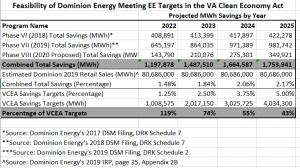 Based on our own analysis, the goals set forth in the VCEA are achievable. As part of our pre-filed testimony in support of Dominion’s Demand Side Management (DSM) Filing, we looked at Dominion’s current energy efficiency programs and their proposed programs to find a baseline for existing energy savings. We determined that, even using conservative estimates as only three years of data were available, Dominion would exceed the 2022 target of 1.25%. Additional analysis by ACEEE indicates that these targets translate to an average of 1.3% savings per year, which would put Virginia in the top 15 states nationwide in terms of utility savings targets.
Based on our own analysis, the goals set forth in the VCEA are achievable. As part of our pre-filed testimony in support of Dominion’s Demand Side Management (DSM) Filing, we looked at Dominion’s current energy efficiency programs and their proposed programs to find a baseline for existing energy savings. We determined that, even using conservative estimates as only three years of data were available, Dominion would exceed the 2022 target of 1.25%. Additional analysis by ACEEE indicates that these targets translate to an average of 1.3% savings per year, which would put Virginia in the top 15 states nationwide in terms of utility savings targets.
Additionally, the VCEA removes the automatic opt out for industrial customers above 500kW, which was instituted as part of the Grid Transformation and Security Act of 2018. Instead, it creates a verified, self-direct program which allows industrial customers above 1MW to opt out only after providing measured and verified savings data to the SCC from their own energy efficiency programs. VAEEC and many member organizations participate in an energy efficiency stakeholder group, which will leverage our ability to identify and maximize the programs that will best meet these customers’ needs. Programs geared towards these large industrial users will go even further towards the savings goals in the VCEA.
The Virginia General Assembly also passed legislation to allow Virginia to join the northeast Regional Greenhouse Gas Inventory (RGGI) as the first southern state to do so. The legislation allocates 50% of the money from the carbon trading regime to the Department of Housing and Community Development for low-income energy efficiency programs, including public housing upgrades and new construction incentives.
Thanks to legislation carried by Senator David Marsden, electric cooperative members will soon have the opportunity to afford energy efficiency upgrades to their homes via an on-bill tariff. The Pay-As-You-Save (PAYS) model has successfully been implemented in other electric coop territories nationwide and Rappahannock Electric Cooperative in Virginia hopes to be the first Virginia coop to offer it in the near future.
Other notable legislation that passed included two bills by Senator Scott Surovell. One bill now requires the Virginia Residential Disclosure Act to include an energy audit as an option for homeowners and buyers during the home buying process. The other legislation will require each state agency to designate an energy manager and begin tracking energy and water consumption at 100% of state-owned buildings by 2025. Public buildings are largely ineligible for energy efficiency programs and funds, so establishing a baseline for their energy use is critical to future savings.
The General Assembly also has the opportunity in the next few years to elect two new commissioners to the SCC, which presents greater opportunities for the expansion of clean energy- including energy efficiency- in Virginia.
The actions taken by the 2020 General Assembly will catapult Virginia into the top half of states in the country on the ACEEE scorecard. It will be up to the energy efficiency industry to ensure that savings from these programs are realized in order to continue climbing in the rankings. The VAEEC and our members will continue to monitor and take part in implementation efforts to ensure that Virginia maintains our new standing as an energy efficiency leader in the southeast.
Families everywhere are navigating the unique challenges of working, schooling, and just living at home. While energy use isn’t at the top of many people’s minds during a pandemic, all of the computers, streaming, hot showers and extra dishes add up to higher bills. Hear from VAEEC Office Manager Rebecca Hui and her daughters, “K” (age 10) and “A” (age 6), about energy use in the time of coronavirus.
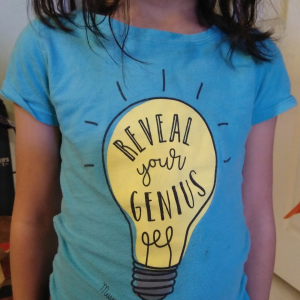 Rebecca: We’re all working in the same room most of the day. What is something we can each do to use less electricity while we’re at home?
Rebecca: We’re all working in the same room most of the day. What is something we can each do to use less electricity while we’re at home?
K (10): When we’re in one area of the house, so say we’re in the front section, we can keep the lights on in here, but in the back, we should turn the lights off. Except maybe in the kitchen.
A (6): Yeah because we frequently go in the kitchen for snacks. And maybe not using all of the computers all at one time.
K (10): We should turn off the computers when we’re finished, and if they’re fully charged, don’t keep them plugged in.
Rebecca: What do you think energy efficiency means?
A (6): To save energy and be efficient.
K (10): So, like, it’s using less energy to get the same thing as when you use more energy. Right?
Rebecca: Why do you think it’s important to use less energy?
K (10): If we use less energy, it helps the environment because some forms of energy you use like oil is not great for the Earth and also we’re wasting it.
A (6): So then we can save up energy for when we actually need it. Then our lightbulbs won’t run out because we will need them the next day.
Rebecca: How would you tell your friends to save energy?
K (10): Turn off the light when you leave a room.
A (6): I have a way. Turn off lights, and when you’re done with your computers, shut them down and turn them off.
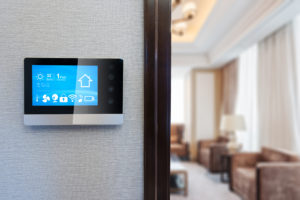 Rebecca: What about other grown ups? What can they do?
Rebecca: What about other grown ups? What can they do?
A (6): When you’re done with your work, when you’re not using something, unplug it and put it away.
K (10): For a lot of grown-ups, turn off your computers. Oooh! And buy LED light bulbs and a smart thermostat.
Rebecca: What is your favorite thing to do that doesn’t use a computer or TV?
A (6): I know! Reading a paper book. My other idea is drawing. I also like to observe flowers and ride my bike.
K (10): I like sewing and crocheting. Outside, I like roller skating.
Rebecca: What is one thing I always say to you?
A (6): Close the door.
K (10): Turn off the lights upstairs!
This is a guest post from Honeywell, the program manager for Dominion’s newest residential energy efficiency program.
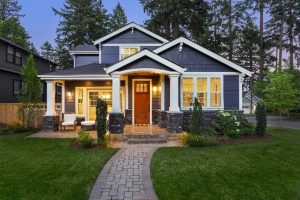 Residential homeowners looking to make their home more energy efficient in preparation for winter and beyond can benefit from the launch of Dominion Energy Virginia’s new Home Energy Assessment (HEA) Program.
Residential homeowners looking to make their home more energy efficient in preparation for winter and beyond can benefit from the launch of Dominion Energy Virginia’s new Home Energy Assessment (HEA) Program.
HEA is one of 8 programs approved by the State Corporation Commission in support of improving energy efficiency opportunities in Virginia for residential and commercial customers.
Dominion Energy’s residential customers can receive an in-home energy assessment where a qualified participating contractor will conduct a walk-through audit and install simple measures like LED bulbs and water heater pipe insulation, while identifying other energy-saving opportunities in the home. Recommended energy efficiency improvements will be suggested for maintenance and upgrades on heating and cooling systems, ductwork and water heaters through a customized HEA report. Once customers have worked with their contractor to install the recommended improvements, they are eligible to receive valuable rebates that help to offset the cost of service.
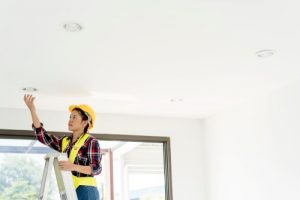 The HEA Program was designed with three simple steps to make it easy to participate:
The HEA Program was designed with three simple steps to make it easy to participate:
- You can schedule an assessment at a time that is convenient for you with the contractor. Visit DominionEnergy.com/HomeEnergy to find a list of participating contractors.
- The contractor conducts a 30 to 60-minute walk-through of the home and installs simple measures, while identifying other energy-saving opportunities
- The contractor works with you to submit the rebate application for work completed
Dominion Energy’s new portfolio of energy efficiency programs were approved to run for a 5-year period through June 2024. Other new residential programs include appliance recycling and efficient products rebates. Non-residential programs provide rebates for energy efficient lighting systems and controls, heating and cooling systems, window film, small manufacturing facilities and office buildings.
All approved programs are part of the $870 million of energy efficiency programs that Dominion Energy is required to propose over a 10-year period, as ordered by the Grid Transformation & Security Act of 2018. The landmark legislation will keep Virginia’s traditional advantage of low electricity prices and reliable service while taking dramatic steps towards the future by expanding renewable energy and broadening the potential for energy efficiency programs in Virginia. If you are interested in learning more about these energy efficiency programs, please visit www.DominionEnergy.com/ECprograms.
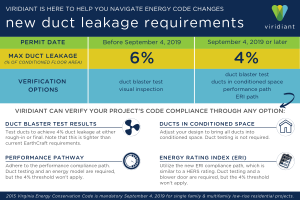 A lot of progress has been made on updating the Uniform Statewide Building Code (USBC) since our last blog post. First, the update that was finalized last year (the 2015 update for anyone who gets really into the weeds on this topic), went into effect earlier this month. Our friends over at Viridiant made a terrific infographic outlining the energy changes in that update and are hosting several compliance trainings across the state.
A lot of progress has been made on updating the Uniform Statewide Building Code (USBC) since our last blog post. First, the update that was finalized last year (the 2015 update for anyone who gets really into the weeds on this topic), went into effect earlier this month. Our friends over at Viridiant made a terrific infographic outlining the energy changes in that update and are hosting several compliance trainings across the state.
Over the summer, VAEEC and some of our members attended DHCD energy subgroup meetings to identify areas of consensus among stakeholders on the current update (the 2018 update for anyone who gets really into the weeds on this topic). You can read about all of the proposals discussed in the initial subgroup meeting in our last blog post on building codes.
We are pleased to announce that VAEEC and our members were able to successfully reach a compromise with the Homebuilders Association of Virginia, and other stakeholders, on several key proposals. The biggest gain is that blower door testing will now be required on all new homes that are constructed after this update goes into effect. Two smaller proposals also made it into the draft USBC- updating REScheck software and requiring a certificate on the electrical box that includes various energy details of the home. These proposals were voted on at the final workgroup meeting and went before the Board of Housing and Community Development who voted to include them in the draft USBC on September 16th.
While our insulation proposal was deferred until next year, we have an agreement with the homebuilders to do a couple of information sessions throughout Virginia with homebuilders to help them better understand what would be required with an increase in the insulation R-value. We hope to see some improvements to the insulation requirements in the final USBC.
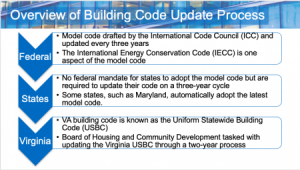 So, what’s next? We are waiting for the draft USBC to be placed in the Virginia Register, which will kick off a 30-day comment period. Then, next year, the entire process begins again as we move into the final phase of this update. The USBC update process is described in detail on our Building Codes page. We even have a handy graphic to explain it.
So, what’s next? We are waiting for the draft USBC to be placed in the Virginia Register, which will kick off a 30-day comment period. Then, next year, the entire process begins again as we move into the final phase of this update. The USBC update process is described in detail on our Building Codes page. We even have a handy graphic to explain it.
This week is National Clean Energy Week! Established in 2017, NCEW focuses on advancing support of our nation’s energy sector through new methods of market development, policy change, and technological innovation. Virginia was the 5th state to formally recognize the event in 2019 in a state proclamation made by Governor Northam.
The Governor made bigger waves in clean energy last week with his announcement at the VA Clean Energy Summit on Executive Order 43, which set forth ambitious goals for the Commonwealth’s energy future. The three part plan includes: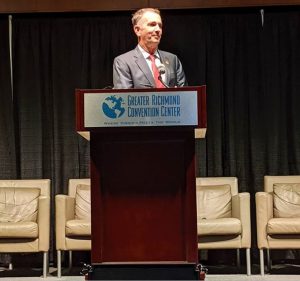
- Objectives for statewide energy production, with the goal of 30% of Virginia’s electric system powered by renewable energy by 2030 and 100% carbon-free power by 2050.
- Lead-By-Example targets for increasing the energy efficiency of Commonwealth agencies and executive branch institutions, with the goal of procuring at least 30% of the power used by those facilities from renewable sources by 2022.
- Development of an energy workforce plan that supports the growing needs of the energy efficiency and renewable energy sectors.
“This is a positive step forward for the energy efficiency industry in Virginia,” said our Executive Director, Chelsea Harnish. “We applaud the Governor for prioritizing workforce development and advancing energy efficiency jobs across the Commonwealth.” The energy efficiency industry currently accounts for over 78,000 jobs in Virginia, and is projected to continue growing by 7.8%.
The Executive Order was just one of the many topics discussed at the VA Clean Energy Summit (VACES). The sold-out inaugural event brought together over 400 professionals from every part of the clean energy industry to learn and network, with 14 breakout sessions, two plenary panels, and two keynote speakers. VAEEC was one of the five host organizations that put on the Summit. In the first plenary panel of the day, Virginia’s Transforming Electricity Grid, David Farnsworth from Regulatory Assistance Project said, “As far as what [work] needs to happen when, I say efficiency first, always.”
Now that the VACES has passed, what can you do to celebrate NCEW?
- Register for the VAEEC Fall 2019 Forum to learn even more about the industry’s future
- Apply for a Virginia Energy Efficiency Leadership Award by Friday
- Call your Senators and Delegates and let them know you support the Executive Order and clean energy in Virginia
- Share pictures and impressions from the VACES and tag #vacleanenergysummit and VAEEC on social media
- Switch to LED light bulbs and install a smart thermostat in your home or office
- Visit one of the LEED certified attractions in VA
Andrew Grigsby of VA-REA said, “The California and Hawaii grids were not built for clean energy saturation, but they have been able to get there because it’s not just renewables. It’s all these pieces (of the industry) working together.”
School is back in session! Children across the Commonwealth are packing their bags, readying their clothes, and preparing for a new journey in their educational career. As we enter a new academic year now is a great time to teach and incorporate energy-efficient practices into your child’s everyday learning! Kids are the future and what better way to increase awareness and make a difference than starting with our future.
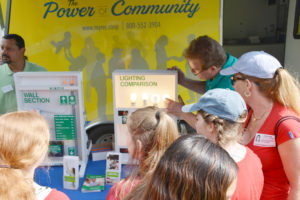
Virginia Energy Sense’s third-grade energy efficiency curriculum, which won “Committee’s Choice Award” at VAEEC’s 2018 Virginia Energy Efficiency Leadership Awards, was developed in partnership between the State Corporation Commission and the Virginia Department of Education and designed to meet the Standards of Learning (SOL). Students go through interactive lessons that teach them how to easily and cost-effectively save energy as well as how to take an active role in promoting change at school and home. These interactive lessons include energy efficiency matching games, crossword puzzles, home and school energy checklists, quizzes and interactive foldable booklets and poster design plans. The knowledge that students gain through these lessons can then be transferred to their parents, friends, family members, and others outside of their classroom. You can read more about the curriculum in Virginia Energy Sense’s official press release.
Outside of the classroom, there are many resources you can use to get kids involved in energy efficiency. Interactive websites such as Apogee Interactive Energy Efficiency Kids Korner, Energy Star Kids, and EIA Energy Kids layout energy efficiency information in a kid-friendly manner and provides interactive games and activities for their entertainment. There are also many kid-friendly videos such as this short titled “Energy, let’s save it!” on Youtube.
Ensuring energy efficiency and environmental protection starts with you and the people around you. Help out our planet by learning more and raising awareness among you, your friends, and your family!
Virginia is home to a huge selection of attractions and locations to visit and spend your leisure time, many of which offer the added benefit of being energy-efficient! As the summer winds down, you’re probably considering a last-minute vacation for the Labor Day weekend. Read up on a few special locations that have been awarded LEED certification for their efforts in energy-efficiency.
Brock Environmental Center
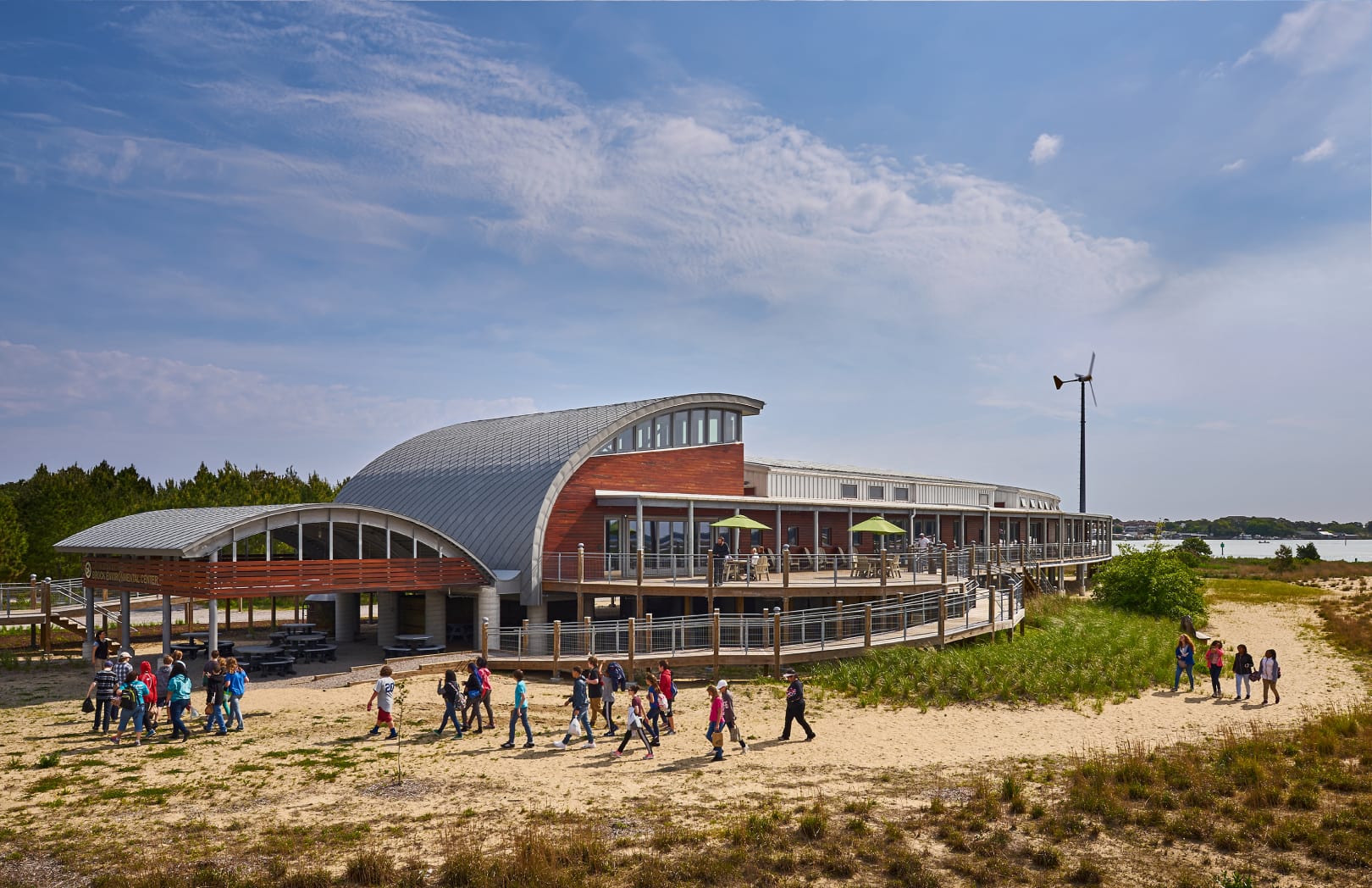
Located in the City of Virginia Beach, the Chesapeake Bay Foundation(CBF)’s Brock Environmental Center has been described as a must-see destination for anyone who is interested in seeing how infrastructure and nature can thrive side by side. The Brock Environmental Center serves as the CBF’s regional base of operations to offer its award-winning environmental education programs to 2,500 students and teachers each year and provides space for other local conservation partners, community meetings and special events.
The project has seen some truly remarkable feats. “In the past year, the Center has produced about 83 percent more energy than it has used. The building also uses 90 percent less water than a typical office building of its size. And as a result . . . uses 80 percent less energy than a typical building that size.”
The building has achieved LEED Platinum certification from the U.S. Green Building Council and Living Building Challenge certification from the International Living Future Institute. Platinum certification designates the Center has scored 80+ points across categories that include: Location & Transportation, Sustainable Sites, Water Efficiency, Energy & Atmosphere, Materials & Resources, Indoor Environmental Quality, Innovation and more. The Living Building Challenge certification requires a building to produce more energy than it uses over the course of 12 consecutive months and maintains strict criteria for water use, location, health, materials, equity, and beauty.
3663 Marlin Bay Drive, Virginia Beach, VA
https://www.cbf.org/about-cbf/locations/virginia/facilities/brock-environmental-center/
Clark Hall – University of Virginia

While visiting the University of Virginia (UVA) campus in Charlottesville, be sure to ask your tour guide for a look inside Clark Hall, a historic that went through a series of retrofits and renovations as part of the university’s pledge to energy-efficiency. Once home to the school of law, the current Department of Environmental Sciences “serves as an unsurprising candidate to lead UVA’s energy conservation efforts by example.”
Within Clark Hall, UVA began its Better Buildings Challenge by converting all of the building’s 5,000 interior and exterior lighting fixtures from fluorescent to LED, installing low-flow toilets and faucets, re-calibrating air handling units and upgrading HVAC controls. The resulting impact saved UVA about $770,000 in energy and water savings, and 3,000 tons of carbon emissions per year! Quite fitting for the building that houses the Department of Environmental Sciences.
291 McCormick Rd, Charlottesville, VA 22903
https://www.virginia.edu
Virginia Beach Convention and Exhibition Center
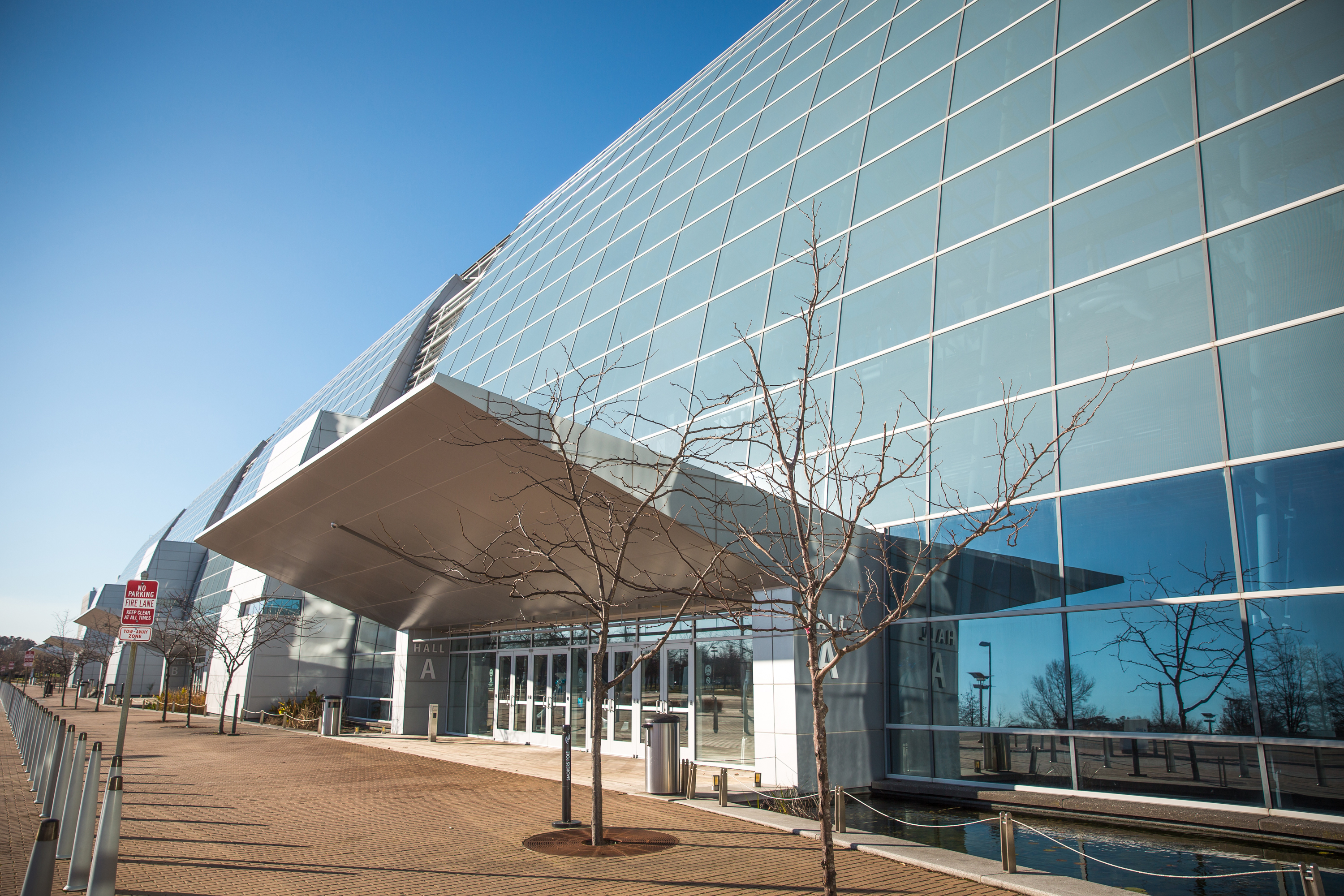
Located within walking distance of the beach, the Virginia Beach Convention Center (VBCC) is publicly owned and maintained by the City of Virginia Beach. Having earned a LEED Gold in the Existing Buildings category, its when renovations helped better serve its capacity of 18,000 while more effectively manage its carbon footprint. 85 percent of the work done to achieve LEED certification was completed by the City of Virginia Beach staff, a testament to the manpower Virginia Beach has to offer.
“The upgraded building automation system provides real-time thermographic color images to illustrate occupant comfort and provides live energy use data. In addition, an on-site vegetable garden, improved water efficiency, and the annual diversion of more than 140 tons of waste from the landfill helped VBCC earn necessary certification points.”
Address: 1000 19th St, Virginia Beach, VA 23451
https://www.visitvirginiabeach.com/convention-center/
Cooper Vineyards

Trips to the vineyard are an excellent way to enjoy the surrounding community one glass at a time, and knowing it was managed in an energy-efficient manner should put your mind even more at ease. You’d achieve exactly that when you delight in a glass of Noche at Cooper Vineyards LEED Platinum certification in 2012 for their environmentally-friendly tasting room. As the Green Badger described it, “the architectural design of the tasting room, with two complete walls of glass that extend up for two stories, makes the visitor experience that of an “indoor/outdoor” space regardless of the weather.”
Cooper Vineyards boasts a nearly 5,000-square-foot building that deserves recognition for its strides in energy efficiency as well. The building holds the vineyard’s offices, kitchen, and tasting room mentioned earlier, and includes a 3,000-gallon tank rainwater harvesting system, a Structurally Insulated Panel System (SIPS), solar power panels, and several 30-foot indoor solar-light harnessing tubes.
13372 Shannon Hill Rd, Louisa, VA 23093
http://www.coopervineyards.com/
Henrico County Public Libraries

Henrico County Public libraries are essential information hubs for their communities. They offer access to resources that can change lives, at no additional fee. Maintaining a library’s many books, computers, videos, conference spaces, learning programs, and more can be energy-intensive. Four of Henrico’s libraries have created a benchmark on implementing energy-efficient practices into their building implementation; the Gayton Branch Library, Glen Allen Branch Library, Libbie Mill Area Library, and Varina Area Library have all reached LEED certification for multiple designs.
After a renovation project that included building automation HVAC systems, high-efficiency sink fixtures, alternative transportation parking, and environmentally conscious material selection, each library was able to reduce water consumption by an average of 42% and energy consumption by 32% with its renovations. Additionally, 90% of construction waste was diverted from landfills! Glen Allen Branch Library was the first of the four to finish renovations in 2010. with Varina finishing up in 2016 and was recognized in 2017 by the American Institute of Architects and the American Library Association for excellence in library design. The new library offers Varina area residents many new and improved services in a beautiful setting while reinforcing Henrico County’s commitment to environmental stewardship.
Gayton

10600 Gayton Rd, Henrico, VA 23238
https://henricolibrary.org/gayton
Glen Allen

10501 Staples Mill Road, Glen Allen, VA 23060
https://henricolibrary.org/glen-allen
Libbie Mill
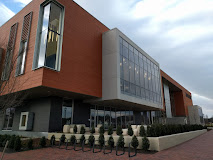
2100 Libbie Lake East St,
Henrico, VA 23230
https://henricolibrary.org/libbie-mill
Varina

1875 New Market Road
Henrico, VA 23231
https://henricolibrary.org/varina
Nationals Park
/cdn.vox-cdn.com/uploads/chorus_image/image/53974235/usa_today_9234991.0.jpg) Baseball fans and Washington D.C. natives alike will be familiar with the home to the MLB team, the Washington Nationals. Nationals Park has the distinction of being the first Major League Baseball stadium with LEED certification!
Baseball fans and Washington D.C. natives alike will be familiar with the home to the MLB team, the Washington Nationals. Nationals Park has the distinction of being the first Major League Baseball stadium with LEED certification!
Built on a brownfield, a lot of care was put into incorporating the stadium into D.C. while minimizing its energy use and resource waste production. Efficient field lighting, external shading, additional shading, low-flow faucets and dual-flush toilets, a 6,300-square-foot green roof over the left-field concession and restroom areas, and stormwater filtration systems help improve the efficiency and quality of the experience offered to its 1,000,000+ sqft. Campus.
1500 S Capitol St SE, Washington, DC 20003
https://www.mlb.com/nationals/ballpark
While you enjoy your next vacation or weekend adventure in Virginia, be sure to learn about how it provides the quality service you love, with the attention to energy and resources that benefit everyone! Know about a location/attraction that has taken strides to remain energy efficient? Email us at info@vaeec.org
Summer is here and with it comes the opening of the Virginia Energy Efficiency Leadership (VEEL) Awards application. Held in conjunction with the VAEEC Fall Forum, the VEEL Awards Luncheon will be held on Thursday, November 14th at the University of Richmond’s Jepson Alumni Center.
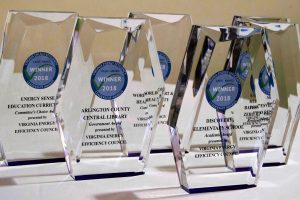
2018 VEEL Awards
For the fourth consecutive year, the awards showcase energy efficiency champions across the Commonwealth. These entities are helping businesses, governments, homeowners, and schools save money on energy bills while reducing energy consumption – all while stimulating Virginia’s job growth and our economy.
This year, submissions will be placed into one of six categories. Submitted projects will be sorted based on the sector served: Academic, Commercial, Government, Low-Income, and Residential. Submitted programs will be placed into their own category. Projects can include, but are not limited to, retrofits, new construction, and innovative technologies or products. Past winning programs include Chesterfield County’s Energy Management Program, Columbia Gas of Virginia’s WarmWise Home Audit program, and the Virginia Department of Mines, Minerals and Energy’s Virginia SAVES program.
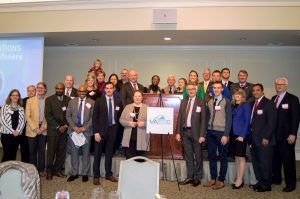
2018 Awards Winners
The quick and free online application process opens on Monday, July 15th and will run through Monday, September 16th. Nominate an acquaintance, a colleague, a role model, or yourself! The only criteria are that the project or program is based in Virginia and is reducing energy consumption. Extra points are given for innovation and creativity, the degree of difficulty in overcoming challenges, and scope of work.
Still have questions? To help you submit your application, we have compiled a guidance document, which includes submission requirements, the application of a previous awards winner, the scorecard with rubric, and frequently asked questions.
We look forward to learning about your energy efficiency contributions. Best of luck!
For a recap of our 2018 VEEL Awards, check out this blog post.
 Social distancing did not stop Virginia’s energy efficiency industry from coming together to learn and connect at our first-ever virtual Spring Forum. Over 100 energy efficiency professionals participated in the event, which included three educational sessions, our annual member meeting with Board elections, the fifth annual Virginia Energy Efficiency Leadership Awards, and a virtual networking break. Attendees were treated to topics such as the 2020 legislation, energy data, high-performance buildings, technology, and more. We want to extend a huge thank you to our sponsors for their support and to everyone who attended.
Social distancing did not stop Virginia’s energy efficiency industry from coming together to learn and connect at our first-ever virtual Spring Forum. Over 100 energy efficiency professionals participated in the event, which included three educational sessions, our annual member meeting with Board elections, the fifth annual Virginia Energy Efficiency Leadership Awards, and a virtual networking break. Attendees were treated to topics such as the 2020 legislation, energy data, high-performance buildings, technology, and more. We want to extend a huge thank you to our sponsors for their support and to everyone who attended.
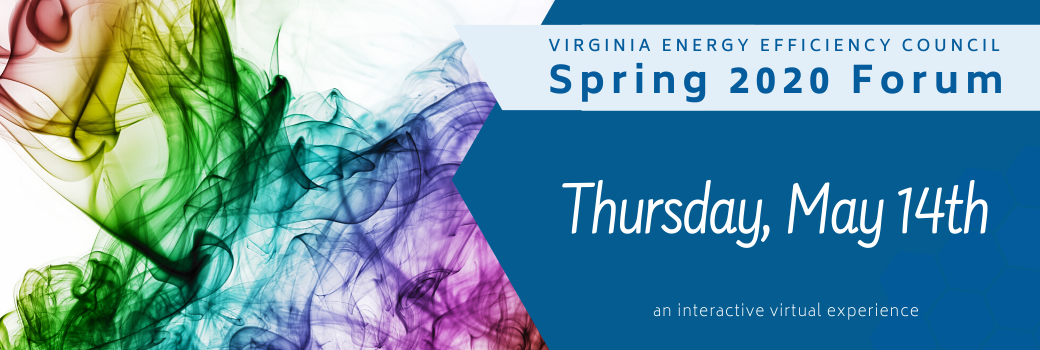

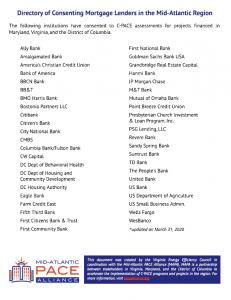




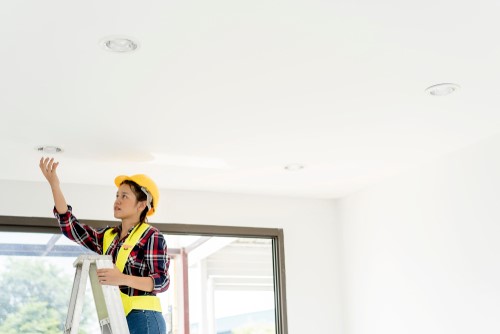


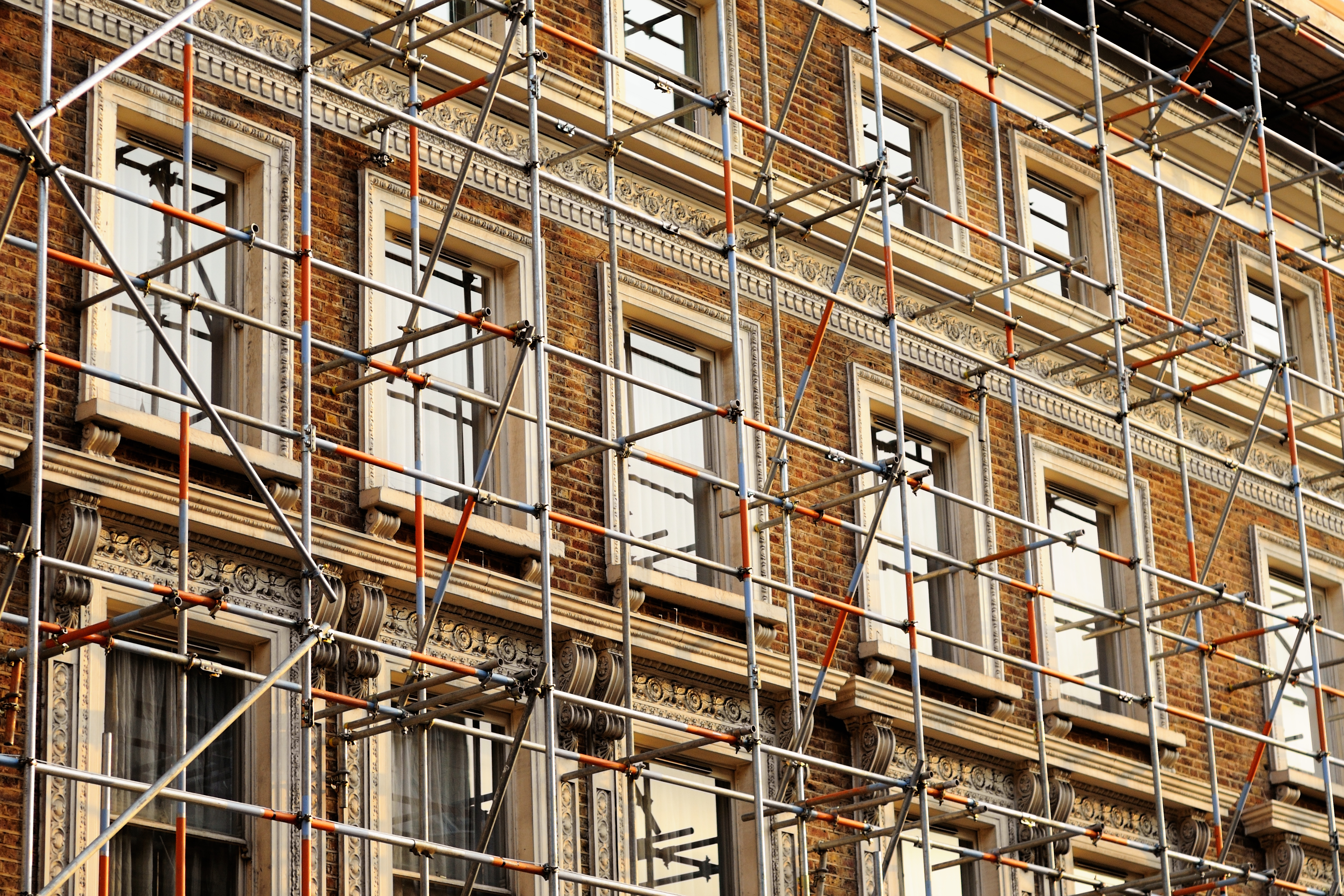


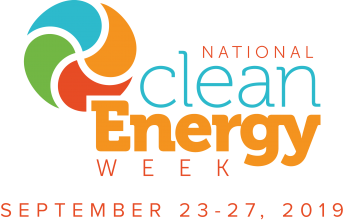

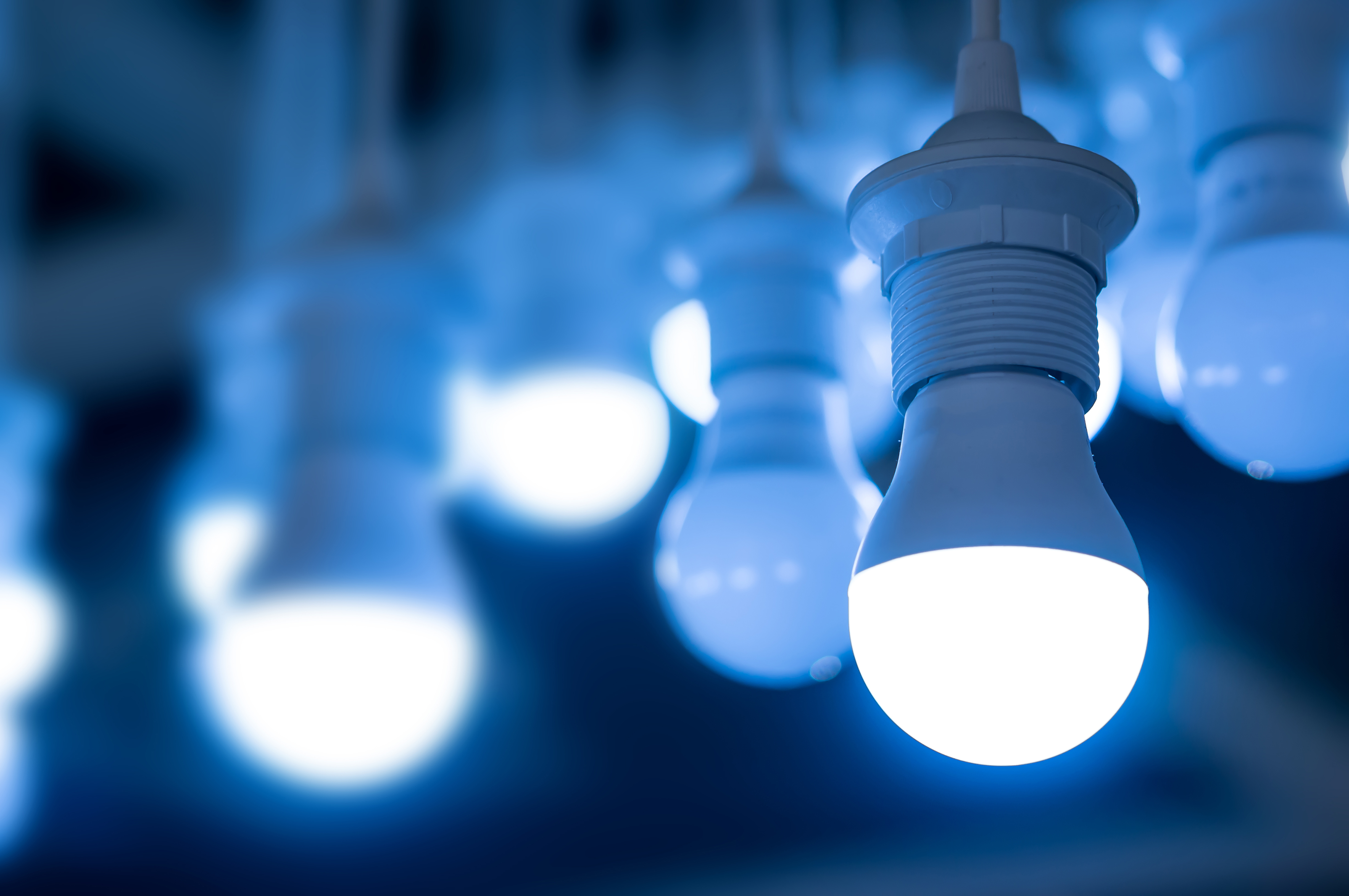







/cdn.vox-cdn.com/uploads/chorus_image/image/53974235/usa_today_9234991.0.jpg) Baseball fans and Washington D.C. natives alike will be familiar with the home to the MLB team, the Washington Nationals. Nationals Park has the distinction of being the
Baseball fans and Washington D.C. natives alike will be familiar with the home to the MLB team, the Washington Nationals. Nationals Park has the distinction of being the 
